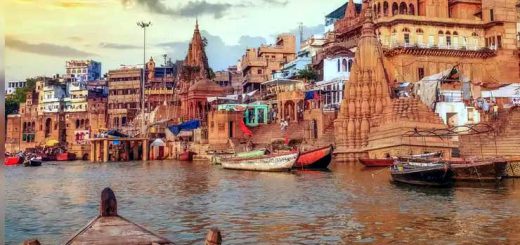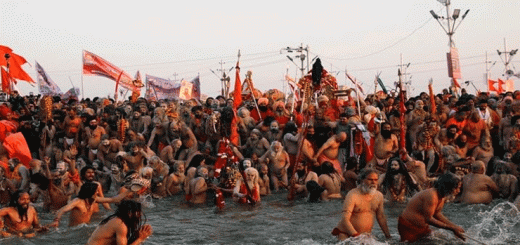Information about Gaya Shradh

Gaya Shradh, also known as Pitru Paksha Shradh, is an important ritual in Hinduism dedicated to the ancestors. It is performed by Hindus to honor and pay respect to deceased family members. This ceremony is primarily performed during the Pitru Paksha (the fortnight dedicated to the ancestors) in the month of Bhadrapada (usually around September or October), according to the Hindu lunar calendar.
Here’s a deeper look at Gaya Shradh and its significance:
1. Significance of Gaya in Shradh
Gaya, a holy city in Bihar, India, holds immense importance in Hindu tradition, especially in relation to the Shradh rituals. It is believed that performing Shradh (rites for deceased ancestors) at the Phalgu river in Gaya is especially auspicious and can help the soul of the departed attain moksha (liberation). According to tradition, it is said that when the rites are performed in Gaya, the ancestors’ souls receive ultimate peace and spiritual salvation.
2. Timing of the Ritual
The ritual takes place during Pitru Paksha, which spans 16 days and typically falls in the lunar month of Bhadrapada. These 16 days are dedicated to performing various rites for ancestors, including offerings of food and prayers.
- Pitru Paksha begins on the full moon day (Purnima) of Bhadrapada and ends on the new moon day (Amavasya).
- Gaya Shradh is particularly significant on the Amavasya day, the last day of Pitru Paksha.
3. Why Gaya?
According to Hindu scriptures, Gaya is the place where Lord Vishnu performed a great act to grant the souls of the ancestors eternal peace. The belief is that the spirits of the departed ancestors can achieve peace and freedom from the cycle of rebirth if their descendants perform the Shradh rituals at the Gaya Tirtha.
- The Phalgu River in Gaya is considered sacred. Hindus believe that the ancestors’ souls bathe in the river and their spiritual journey toward salvation is enhanced.
- Pilgrims often visit Gaya during Pitru Paksha to perform the Tarpan (offering of water, sesame seeds, and other items) and Pind Daan (a ritual where food and offerings are given to the ancestors).
4. Rituals of Gaya Shradh
The main rituals of Gaya Shradh typically include:
- Pind Daan: This involves offering a ball of rice, black sesame seeds, and barley to the ancestors. It is done to provide sustenance to the souls of the deceased.
- Tarpan: Water mixed with sesame seeds is offered to the ancestors, invoking blessings for peace and liberation.
- Feeding Brahmins: Offering food to Brahmins is considered highly auspicious during Shradh, as it is believed that they act as intermediaries between the living and the ancestors.
- Prayers & Mantras: Chanting specific mantras dedicated to the ancestors, such as the Pitru Stotra, is believed to have a profound effect on the souls of the deceased.
5. Spiritual Benefits
- Liberation of the Soul: One of the core beliefs is that Shradh rituals, especially when performed in Gaya, help free the souls of ancestors from the cycle of birth and death (samsara), and lead them to moksha.
- Blessings for the Family: Performing Shradh in Gaya is believed to bring prosperity, peace, and success to the family. It is thought that honoring ancestors can bring blessings in matters of health, wealth, and happiness.
- Purification of the Family Lineage: The Shradh ritual is also believed to purify the family lineage, cleansing it of any negative karma that may have been inherited.
6. Importance of the Tarpan (Water Offering)
The Tarpan offered during Gaya Shradh is highly significant, as it is believed to invoke blessings from the ancestors. The water offering is considered sacred because it is believed that the spirits of the ancestors will drink the water and receive peace.
7. Gaya Shradh in Modern Times
Though many people still travel to Gaya for the Shradh rituals, it’s common for families to also perform the ritual locally or in their hometowns, especially if they are unable to visit Gaya. In such cases, they may follow the same ritualistic procedures but perform them at temples or sacred rivers.
8. Key Deities Associated
- Lord Vishnu: As the preserver of life and the one who grants moksha, Lord Vishnu is often invoked during the Shradh ceremonies in Gaya.
- Yama: The god of death, Yama, is believed to play a role in guiding the souls of ancestors to their rightful place in the afterlife after the Shradh rituals.
Conclusion
Gaya Shradh is a deeply spiritual and significant event for Hindus, especially those looking to honor their ancestors and seek spiritual relief for them. While performing the rituals at Gaya is considered ideal, the act of remembering and paying homage to one’s forebears is universally beneficial, ensuring peace for both the living and the deceased.



